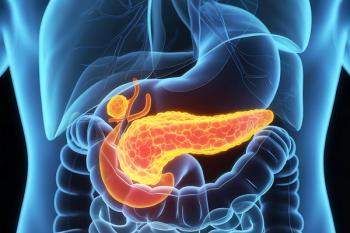
- January 2021
- Volume 17
- Issue 01
3D-Printed Metal Column Developed for Micro-GC
Utilizing 3D-printing technology, researchers have produced a metal column for use in micro-gas chromatography (GC) and examined its properties and ability to perform gas separations.
Micro-gas chromatographic (μGC) systems have evolved considerably since the first chromatographic gas analyzer was fabricated on a silicon wafer in 1979 (2). While this progress has brought significant improvements a number of issues still exist with the most critical part of the μGC system—the microfabricated separation column (μcolumn). The multi‑step process to produce μcolumns is fraught with potential issues from the mismatched thermal expansion coefficients of different materials to issues regarding reproducibility and consistency. The result is an expensive and time-consuming production process with many potential pitfalls.
3D-printing technology has the potential to overcome many of the issues with μcolumns because it offers freedom of design, complex geometry with high precision, the elimination of tooling, rapid prototyping, reduced fabrication times, and cost‑effective customization (3,4). Furthermore, the printing substrates have the potential for ingenuity.
Utilizing this technology, researchers designed and produced a μcolumn using Ti6Al4V Grade 23 powder and a direct metal laser sintering (DMSL). DMSL is a widely used 3D-printing technique where metal powders on the platform are selectively sintered together by a high powered laser. The column was then coated with a stationary phase, characterized, and used in a GC analysis.
Results of the column characterization found the 500-μm-diameter circular channel and 800 μm-wide ports to be uniform and without distortion when examined with 3D X-ray microscopy. Furthermore, the columns displayed physical and thermal properties similar to that of standard Ti6Al4V Grade 23 alloy with near zero porosity (~0.07%).
The column was tested with pre-treatment and stationary coating, as well as with no treatments and only with pre‑treatment. A superior separation was achieved with the column with both pre-treatment and stationary coating when a gas mixture of alkanes aromatics, alcohols, and ketones was investigated. Researchers then employed the column to separate a gas mixture of 12 alkanes with the results showing no significant column or peak tailing.
Following these results the researchers anticipate that the technology can lead to further advancements of μGC technology and further deliver the promised reduction of analysis times, resources, sample quantity required, and costs.
Articles in this issue
almost 5 years ago
12 Tips for Successful Chromatography in 2021almost 5 years ago
Trends and Developments in Data Handlingalmost 5 years ago
The Starring Role of GC–MS in Bioanalysisalmost 5 years ago
SCM-X 2021 Previewalmost 5 years ago
LCGC Columnist Anurag Rathore Receives Agilent Thought Leader Awardalmost 5 years ago
Vol 17 No 1 The Column January 2021 North American PDFalmost 5 years ago
Vol 17 No 01 The Column January 2021 Europe & Asia PDFNewsletter
Join the global community of analytical scientists who trust LCGC for insights on the latest techniques, trends, and expert solutions in chromatography.





